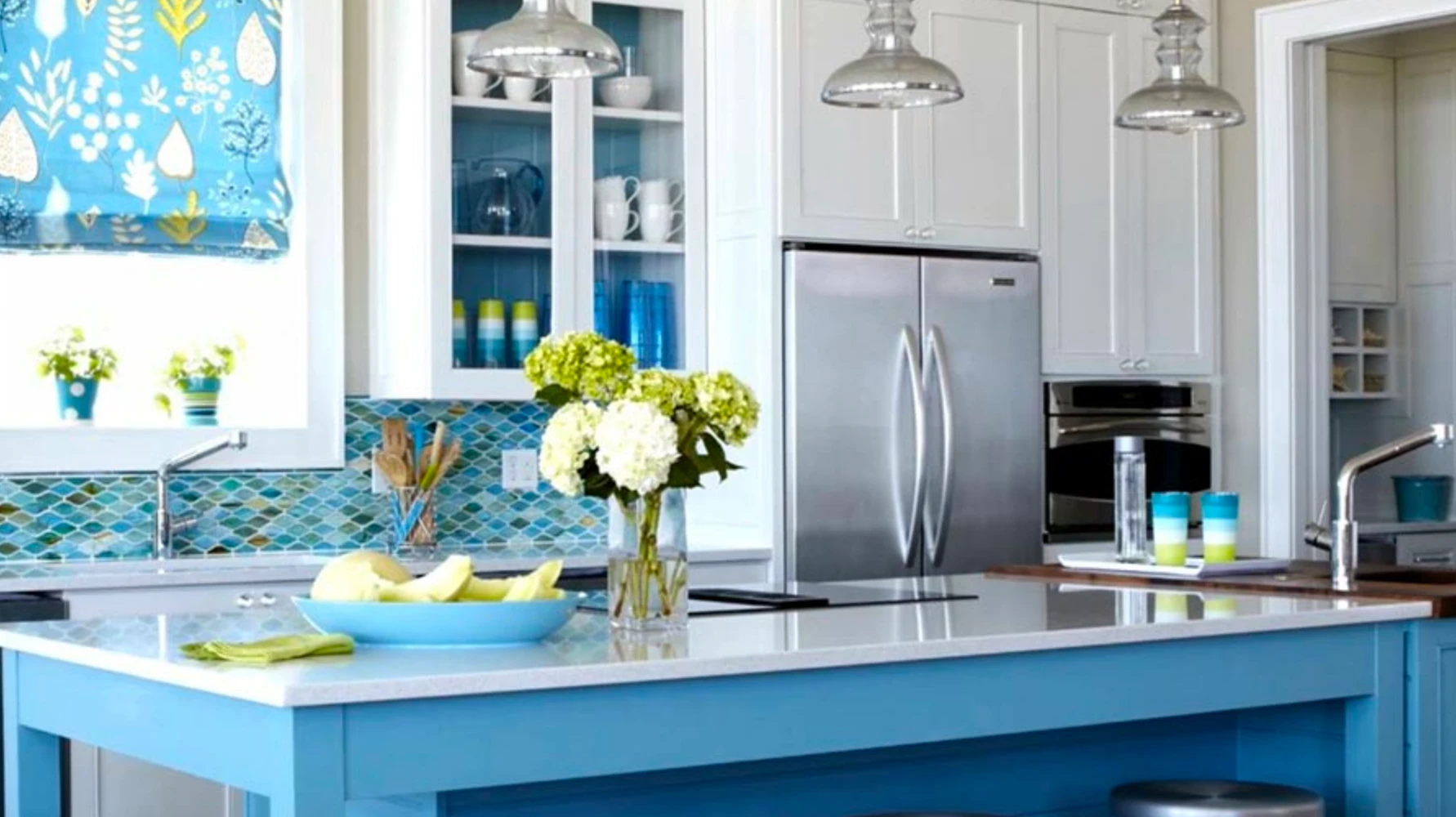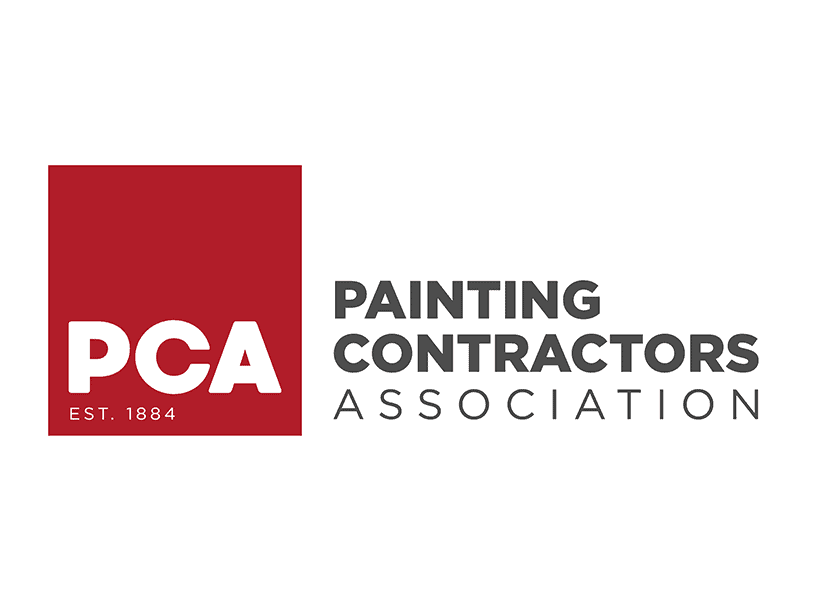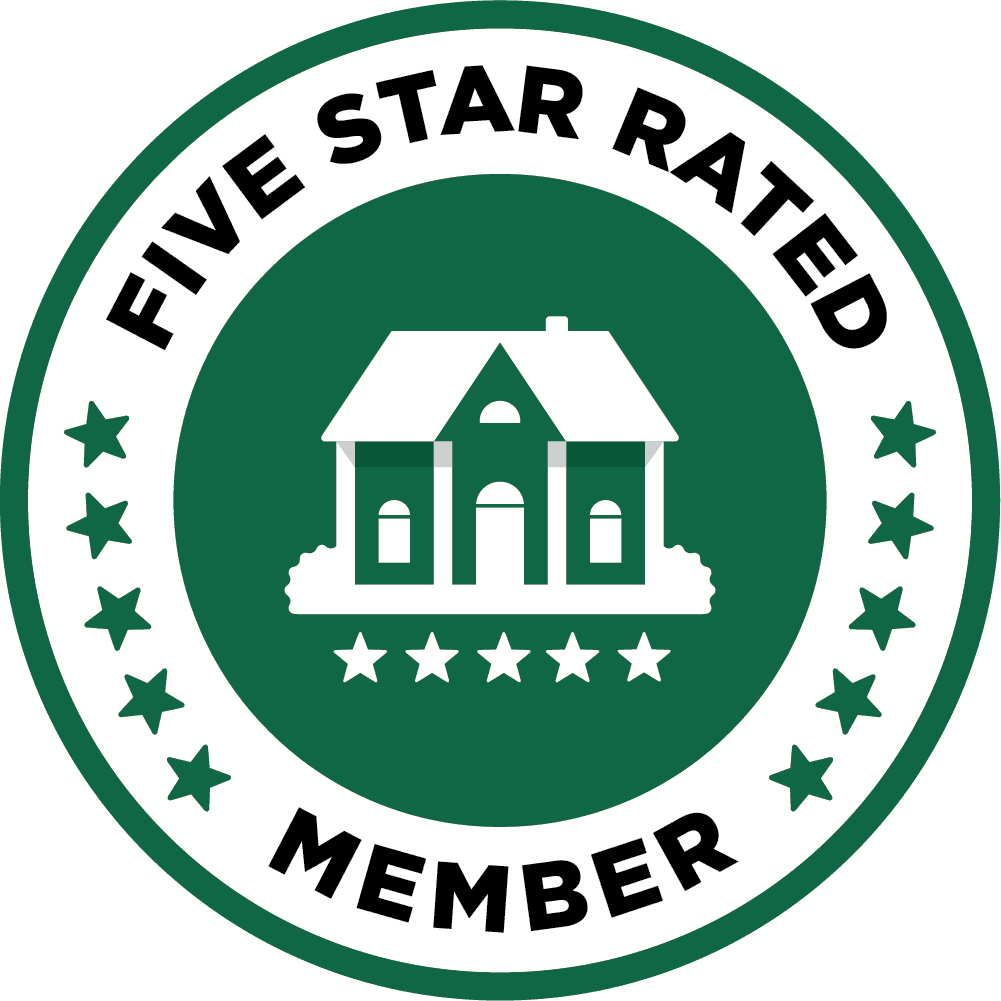
21 May Choosing the Perfect Kitchen Color Palette
Choosing a color scheme for your kitchen is more than just a visual decision; it’s a chance to infuse your home with your unique style and personality, enhancing its vitality and charm.
Color can completely transform your kitchen, whether the soft morning light casts a warm glow over your countertops or how your cabinets seem to come alive with each new hue.
By taking the time to understand your kitchen’s unique dimensions, how natural light interacts with it, and the psychological impact of each color, you can craft a palette that inspires creativity in cooking and promotes a sense of comfort and well-being.
This article explores how to harmonize your kitchen’s colors with the layout, lighting, and taste to create a space where memories are as richly rendered as the meals you prepare. For instance, a warm and inviting palette could include shades of cream, beige, and light brown, while a vibrant and energetic palette might feature red, orange, and yellow pops.
Keep reading to unveil the secrets to a harmonious kitchen color palette that reflects your personality and style.
Understanding Your Kitchen’s Layout and Natural Light
As I embarked on selecting a color palette for my kitchen, I realized the importance of tuning into the space’s inherent characteristics.
The play of natural light throughout the day can dramatically alter the perception of color on my walls and cabinetry.
I start by evaluating how sunlight bathes the area, noting the intensity and angles during peak hours. One practical tip is to take photos of your kitchen at different times of the day to see how the light changes and how it affects the colors in your space.
Next, I assess my kitchen’s dimensions; its magnitude and form substantially influence my choice, as colors can either expand the illusion of space or embrace cozy intimacy.
Through this process, I also pinpoint the kitchen’s focal points—those aspects that ought to be highlighted or balanced with a thoughtful stroke of color.
This preliminary scrutiny sets the stage for a palette that resonates with my aesthetic sensibilities and harmonizes with my kitchen’s functional and architectural ethos.
Evaluate the Amount of Natural Light
The infusion of natural light in a kitchen doesn’t merely illuminate; it breathes life into my chosen colors. Observing the kitchen at different times of day, I note how the sun’s rays interact with various surfaces: the luster on the cabinet doors, the sheen on the countertop, and the overall ambiance they collectively foster.
Armed with this knowledge, I’m better equipped to make informed decisions regarding hue and saturation: a sun-drenched kitchen might sway me towards more fabulous, subtler shades, while a space craving light could benefit from warm, reflective tones. The intensity and direction of sunlight are my silent partners in this dance of chromatics:
| Time of Day | Light Quality | Color Impact |
|---|---|---|
| Morning | Soft, Warm | Enhances Yellow & Red Hues |
| Noon | Bright, Direct | Truest Color Perception |
| Evening | Dim, Cool | Deepens Blue & Green Tones |
Consider the Size and Shape of Your Kitchen
As I contemplate the vast array of color options available for my kitchen, the space’s size and shape play a critical role in my selection process: my cabinetry and walls shouldn’t just echo a personal style and augment the kitchen’s proportions and architecture. It’s also important to consider how different colors can enhance the architectural features of your kitchen. For example, you might choose a color that complements the color of your kitchen cabinets, or a color that highlights a unique architectural feature, such as a high ceiling or a large window.
| Kitchen Size | Color Strategy |
|---|---|
| Spacious | Bold, Dark Hues to Add Depth |
| Compact | Light, Bright Tones to Create Openness |
In my experience, lighter hues give a sense of expansiveness to smaller kitchens, creating a breezy and open feel. Conversely, dark colors can lend a touch of sophistication and intimacy to more extensive spaces, anchoring the room with a sense of grounded elegance.
Identify Your Kitchen’s Focal Points
Like a canvas, my kitchen has subtle and pronounced features that demand careful consideration. The arch of a grand window, the vintage range hood, or even a built-in display shelf can dictate where the eye rests and how the room feels.
Accentuating these areas with contrasting or complementary colors can elevate the overall ambiance. A striking backsplash or an island with a pop of color can become a conversation piece, harmonizing with the ensemble of my culinary space:
| Focal Point | Color Approach |
|---|---|
| Window Arch | Use Lighter Shade to Enhance Natural Light |
| Range Hood | Neutral Tones to Complement Appliances |
| Display Shelf | Bold Hue to Highlight Collections |
Thus, as I deliberate on the palette, the focal points in my kitchen don’t simply inform my choices; they guide them. These elements are intrinsic to forging a cohesive yet stunning kitchen that feels like home and is a part of my narrative.
Starting With a Color Mood Board
Embarking on selecting my kitchen’s color palette, I turned to creating a mood board—an essential step that serves as the visual springboard for my project.
I began gathering snippets of inspiration from the plethora of home decor websites and glossy magazines that caught my eye, knowing they held the seeds of my kitchen’s potential transformation.
Consciously, I sought a spectrum of colors, aiming for a diverse palette to accommodate whimsical bursts of color and subtle, grounded tones.
Leveraging the power of online tools, I started experimenting with the colors I was drawn to, mixing and matching them to see how they communicated. I imagined how they would eventually unfold within my kitchen’s walls and cabinetry.
Gather Inspiration From Home Decor Websites and Magazines
My adventure into rediscovering my kitchen’s color identity begins with thumbing through the latest home decor magazines and perusing myriad websites dedicated to interior design. Each page and click presents a kaleidoscope of shades and textures, fueling my imagination with endless possibilities.
Captivating paint swatches, immersive room setups, and innovative design techniques leap from these sources, urging me to weave disparate ideas into a singular vision for my kitchen. What begins as a casual browsing session soon transforms into a curated collection of potential palettes and themes that resonate with my style:
- Fluid gradients of blues echoing oceanic vistas captured in a glossy photo spread
- An article’s warm palette recommendation embracing the afternoon sun flooding through my window
- The bold contrast found in a featured modern kitchen clarifies my desire for a statement wall
Select a Range of Colors to Create a Diverse Palette
Pursuing the ideal color scheme for my kitchen leads me to select a spectrum of shades, balancing harmony with contrast. For example, a palette of soft pastels can create a harmonious and calming atmosphere, while a mix of bold and neutral colors can add interest and depth to the space.
The chosen colors lay the groundwork for my kitchen’s mood and functionality. I aim for a blend of tranquility and energy: serene blues and greens, invigorated with dashes of red or orange, to inspire both calm mornings and lively dinner parties:
- Soothing seafoam green that evokes a sense of renewal with each sunrise.
- A zestful coral infuses the kitchen with warmth and enthusiasm.
- Crisp whites that promise cleanliness and mental clarity for culinary creativity.
Utilize Online Tools to Mix and Match Your Chosen Colors
The vast array of online tools has revolutionized my design process in this digital era. Color planning becomes an interactive experience, where I can drag and drop my chosen swatches into virtual rooms, tailor the lighting conditions, and instantly visualize the interplay of colors within my own kitchen space.
Experimenting with these digital palettes, I can tweak shades and tones with a click, witnessing how subtle changes affect the mood before even picking up a brush. This virtual playground is essential for refining my vision, ensuring that each color complements the kitchen’s structure and the daily life that unfolds within it.
Considering the Color Wheel in Kitchen Design
Navigating through the vibrant spectrum of the color wheel is like embarking on a journey into the heart of my kitchen’s potential aesthetic.
It’s an invaluable resource that guides my decisions, ensuring the hues inhabiting my kitchen don’t just coexist but thrive in visual harmony.
As I delve into color theory, I carefully consider how to achieve the ideal balance with complementary colors—those directly opposite each other on the wheel, offering a dynamic equilibrium.
In the same breath, I explore analogous colors, which sit side by side and exude a sense of natural harmony, perfect for crafting a serene atmosphere.
For those moments when I yearn to make a confidently bold statement, I contemplate a triadic scheme, employing evenly spaced colors that inject vibrant energy into my culinary haven.
Each approach offers a distinct flavor, a unique chord in the symphony of my kitchen’s design narrative.
Identify Complementary Colors for Balance
I gravitate towards complementary colors when choosing the right color combinations for my kitchen. This classic design tactic involves pairing hues directly across from each other on the color wheel. This strategy promises to bring a lively yet balanced visual interest to the culinary space where I spend much of my time.
A certain magic occurs when these colors mingle: a vivid dance of shades that enliven the room while maintaining an elegant equilibrium. For instance, imagine the zest of an orange backsplash standing in gorgeous contrast against a serene blue wall:
| Main Color | Complementary Color | Resulting Feel |
|---|---|---|
| Orange Backsplash | Blue Wall | Dynamic & Exciting |
| Green Cabinet | Red Accents | Harmonious & Inviting |
| Purple Chair | Yellow Lighting | Vibrant & Warm |
Deploying these color tactics is not just about aesthetic appeal; it’s about creating a sensory experience that invigorates the space. It ensures that my kitchen doesn’t just cater to my love for cooking but becomes a dynamic venue for gathering and engaging with family and friends.
Explore Analogous Colors for Harmony
As I sift through my mental palette, I’m naturally drawn to analogous colors, which, for many, represent a harmonious choice. These hues are next to each other on the wheel, creating a seamless transition in my kitchen that’s smooth on the eyes and calming to the spirit.
I’ve found that interweaving analogous colors, like a soft sage that gently shifts to an earthy olive, offer my kitchen a tranquil continuity. This subtle gradation of color unites the space and envelops me in an atmosphere of peacefulness, ideal for a room where I start and end my day.
Consider Using Triadic Colors for a Bold Statement
I often use a triadic color scheme to infuse my kitchen with vivid charisma. This daring but balanced approach involves selecting three equidistant hues on the color wheel, creating a palette that promises diversity and harmony within the culinary space.
The triadic arrangement inspires me to experiment with confidently spirited colors that might normally reside outside my comfort zone. It encourages a playful yet refined interplay of colors that elevate the kitchen’s aesthetic and reflect my bold taste in design.
The Psychology of Color in Your Kitchen
The colors we surround ourselves with in the kitchen do more than just please the eye; they invoke emotions, influence our comfort levels, and can even affect our appetite.
In making mindful choices about the color palette for this heart of the home, I consider the psychological impact each shade may carry.
The allure of warm hues, like sun-kissed terra cotta or buttery yellow, offers an embrace of coziness, calling loved ones to gather.
Conversely, the tranquility of cool tones such as sage green or soothing lavender provides a sanctuary for unwinding and reflecting after a bustling day.
Deliberately selecting colors means diving deep into how they sway my mood and stimulate my senses, crafting an atmosphere that caters to my culinary endeavors and nourishes the soul.
Choose Warm Colors for a Cozy, Welcoming Feel
In making my kitchen a hub of warmth and friendliness, I gravitate toward warm colors that naturally invite people in. A palette infused with hues such as rich creams, toasty beiges, or inviting terracottas sets the stage for an inherently welcoming atmosphere, where every meal feels like a gathering of friends and family.
There’s an undeniable charm in the embrace of a kitchen adorned with warm colors; it goes beyond aesthetics, touching on an emotional resonance. Bathed in the glow of a caramel accent wall or the earthy embrace of sienna-hued cabinetry, my kitchen transforms into a space that doesn’t merely house appliances but exudes an aura of homely cheer and comfort.
Opt for Cool Colors for a Calm, Serene Space
Steering away from the bustling energy of warm shades, I often find solace in the incredible spectrum of colors that evoke a sense of tranquility in my kitchen. The whisper of a pale blue or the muted caress of a gentle grey imparts a serene ambiance that transforms the kitchen into an oasis of calm.
Surrounding myself with these serene hues, I notice how they instill a peaceful backdrop ideal for introspective moments while sipping my morning tea or preparing a quiet meal. These cooling tones seem to lower the tempo of the bustling household, creating a sanctuary from the day’s ebb and flow:
| Cool Color | Emotional Impact | Space Influence |
|---|---|---|
| Pale Blue | Calming & Concentration-Inducing | Expands the Space |
| Soft Grey | Neutral & Balanced | Complements Metallic Accents |
| Mint Green | Rejuvenating & Refreshing | Introduces Nature’s Vibe |
Evaluate How Different Colors Affect Your Mood and Appetite
Investigating the color spectrum for my kitchen renovation, I am acutely aware of how hues can influence mood and appetite. For example, vibrant reds and oranges stimulate hunger, making them ideal for spaces where food takes center stage, while neutrals create a balanced ambiance for thoughtful digestion and conversation.
| Color | Mood Influence | Appetite Effect |
|---|---|---|
| Vibrant Red | Energizing & Stimulating | May Increase Hunger |
| Cool Blue | Calming & Soothing | Tends to Suppress Appetite |
| Earthy Green | Relaxing & Renewing | Can Encourage Healthy Eating |
Conversely, softer tones such as blue or green can present an air of serenity, possibly suppressing the appetite but promoting healthier eating by creating a stress-free environment. Colors are powerful tools that, when used intentionally, influence the energy of the room and my interactions within it, extending beyond mere visual appeal to shape my culinary experiences.
Coordinating Your Cabinets, Walls, and Countertops
The alchemy of uniting color across cabinets, walls, and countertops holds the secret to a kitchen that exudes beauty and harmony.
I take pride in sculpting spaces where color doesn’t simply exist but converses, creating layers of depth and interest.
A color palette that matches across different surfaces offers a serene visual flow, lulling the space into unity.
Daring to contrast, on the other hand, I carve out distinct features and areas of prominence, defining the very character of my kitchen.
Yet, amid this color choreography, I nurture a fondness for neutrals. They present an undercurrent of decor flexibility, making room for evolving tastes and trends.
Matching Colors for a Unified Look
Upon deliberating on the aesthetic cohesion of my kitchen, aligning the colors of cabinets, walls, and countertops offers a tapestry of tranquility that widens the room’s boundaries. From the cabinets’ understated elegance to the countertops’ reflective grace, this symphony of hues conjures a seamless panorama that imbues the space with an airy fluidity.
In pursuing a space that echoes a singular vision, I consider the subtle artistry that comes with matching tones across varying surfaces. It’s a delicate balance, where the creamy consistency on the cabinet surfaces extends to the walls, softening the kitchen into a cohesive sanctuary that welcomes creativity and calm in equal measure.
Contrasting Colors to Highlight Specific Features
Embracing contrast in my kitchen design is not merely about aesthetics; it’s strategy, a way to use color to craft focal points and accentuate key features. A bold cabinet color set against a subdued wall invites the eye, turning the cabinetry into a stand-out element of the kitchen’s overall look.
For instance, the interplay between light countertops and dark cabinet shades creates a striking visual impact, adding depth and dimension to the culinary space. This duality in hues celebrates the kitchen’s architecture and punctuates it with personality, mirroring my design preferences and lifestyle needs.
| Surface | Base Color | Contrast Color | Impact |
|---|---|---|---|
| Cabinets | Cream | Forest Green | Stylish Statement |
| Walls | Soft Grey | Navy Blue | Accentuated Features |
| Countertops | Pristine White | Charcoal Grey | Enhanced Depth |
Incorporating Neutrals for Flexibility in Decor
In my kitchen, neutrality plays a pivotal role, setting the stage for decorative nuances and personal touches to come alive. I turn to shades like classic ivory for my walls, an inviting canvas that allows my vibrant kitchen accessories to steal the spotlight, infusing my space with a dynamic yet harmonious aesthetic.
Opting for neutral tones in cabinetry allows me to pivot in decor styles later without revamping the entire kitchen color scheme. This choice imparts an enduring elegance and a timeless backdrop that gracefully supports the minimalistic urn on the countertop and the vividly painted vase that occasionally appears.
Top Trends in Kitchen Color Schemes
Keeping abreast of kitchen color trends is part of my passion for home improvement, a blend of art and practicality, much like a chef’s approach to cooking.
As I navigate this evolving landscape, I aim to harmoniously integrate the latest trends in kitchen colors with my unique style, ensuring a space that feels both contemporary and deeply personal.
Whether I embrace the bold palettes gracing the covers of design magazines or opt for timeless colors that transcend seasonal changes, my decisions are thoughtful and deliberate.
The art lies in striking the right balance between trendy and classic, allowing my kitchen to embody a sense of trend awareness while maintaining a personal touch that won’t feel dated as the years go by.
Explore the Latest Trends in Kitchen Colors
Staying on the pulse of kitchen color trends, I’ve watched soft pastels gain popularity, offering a refreshing alternative to traditional neutrals. These hues bring a delicate vibrancy to the space, infusing a light, airy quality that makes the kitchen feel like a spring morning year-round.
Recently, matte black has emerged as a sought-after choice for those seeking a modern, sleek look. Its depth and sophistication contrast impressively against the stainless steel and natural wood elements prevalent in contemporary kitchen design, embodying a bold aesthetic that’s as functional as it is stylistically assertive.
How to Adapt Trendy Colors to Suit Your Style
Adapting trending colors to suit my style begins with identifying which of these shades speak to my aesthetic and the existing decor of my kitchen. I consider how a trending color can accentuate my countertops or cabinetry, always ensuring that the introduction of any new hue complements rather than clashes with the space.
When incorporating trendy colors, I also plan for the long term by choosing accessories and accents that can be easily switched out. This approach allows the core palette of my kitchen to remain classic while the accents keep the space feeling fresh and current:
| Trendy Color | Application | Longevity |
|---|---|---|
| Matte Black | Hardware & Light Fixtures | Timeless with Easy Updates |
| Pastel Blue | Accent Wall or Accessories | Seasonal Refresh |
| Earthy Greens | Cabinet Colors | Long Lasting Natural Feel |
When to Opt for Timeless Colors Over Trendy Ones
Trendy hues may dazzle at first glance, but timeless colors offer an enduring appeal that survives the whims of design cycles. When I yearn for a kitchen that ages gracefully, I favor a palette that will stand the test of time; classics like crisp white, deep navy, or soothing earth tones ensure my space retains its charm regardless of shifting trends.
Selecting a timeless color scheme becomes pivotal when looking for stability and continuity in my home environment. This choice is particularly significant in the kitchen—a space that often serves as the cornerstone of daily life, witnessing family milestones and evolving practical needs.
| Timeless Color | Characteristics | Benefits |
|---|---|---|
| Crisp White | Clean, Bright, Adaptable | Amplifies Light; Creates Illusion of Space |
| Deep Navy | Elegant, Sophisticated | Serves as a Neutral with a Dose of Drama |
| Earth Tones | Warm, Welcoming | Complements Natural Materials; Offers Comfort |
Choosing the perfect kitchen color palette is essential to creating a visually harmonious and emotionally resonant space.
It allows for a blend of personal style and functionality, enhancing a kitchen’s dimensions while catering to the daily life within.
Thoughtful coordination of cabinets, walls, and countertops with your chosen colors ensures aesthetic cohesion and flexibility in decor.
Ultimately, the suitable color scheme transforms a kitchen from a mere cooking area into a vital, welcoming, and soul-nourishing part of the home.
Selecting the perfect kitchen color palette can transform the heart of your home. Home Works Painting offers expert insights to help you choose colors that reflect your style and enhance your kitchen’s ambiance. You can create a harmonious and inviting space you’ll love for years with their guidance. Trust their expertise for stunning results.

Mike Katounas is the owner of Home Works Painting, a painting business in Northern Virginia. He has over 15 years of experience in residential interior and exterior painting, drywall installation/repair, carpentry, wallpaper removal, power washing, commercial painting, color consultation, and staining/sealing. Their service areas include Chantilly, Fairfax, Herndon, Oakton, Reston. Mike takes pride in his work, and he always follows a strict code of conduct that includes the use of quality paint, a clean workspace, and an honest, respectful approach to his customers.












Sorry, the comment form is closed at this time.